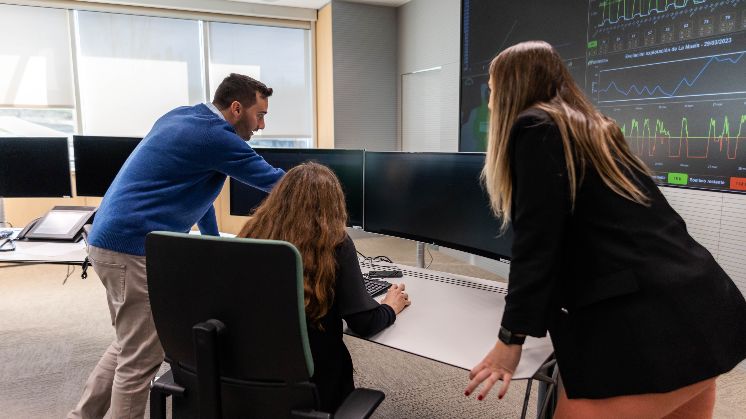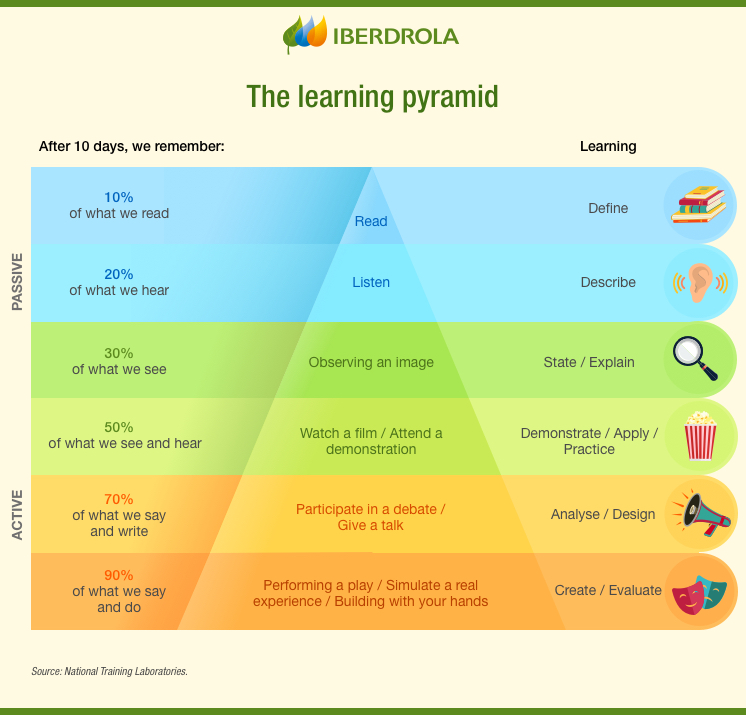Learning by doing
'Learning by doing', a methodology to boost in-company training
Companies are increasingly embracing learning by doing, a more action-oriented methodology when it comes to staff training. It is based on the practice of the work performed in order to stimulate the activity, motivation and participation of employees, sharing ideas in workgroupsand developing a fair self-assessment.

The world of learning has changed: online training is gaining ground over the classroom version, digital media over traditional communication, and practice over theory. In this scenario of constant change, learning by doing is presenting itself as an up-and-coming trend in the area of training. For businesses seeking to improve workplace training, this method is becoming increasingly popular for its ability to develop basic skills such as decision-making, teamwork and leadership.
What is 'learning by doing'. Aims
"What we have to learn to do, we learn by doing". This quote, attributed to Aristotle, is precisely what learning by doing is all about. Fast forward to the first half of the 20th Century, two American pedagogues — John Dewey and William Heard Kilpatrick — put forward the theory that “learning is at its best when it is the result of significant experience, because that is what allows the student to collaborate in the planning, production and understanding of the experience”.
The theory was substantiated in practice in the '70s y David Kolb, Harvard and Massachusetts Institute of Technology (MIT) professor who, drawing on his experbience as a university student — according to him, boring and with pretty low knowledge retention — decided to implement different methods with his students in order to get different results. Kolb thus developed ELT (Experiential Learning Theory), introducing into his classes activities like games, role plays and simulations. The result? Attention and retention on the part of the students increased substantially.

 SEE INFOGRAPHIC: The learning pyramid [PDF] External link, opens in new window.
SEE INFOGRAPHIC: The learning pyramid [PDF] External link, opens in new window.
Thereafter, learning by doing started to become popular. Also thanks to contributions from others like Roger Schank, known as the enfant terrible of modern-day education, who maintains that the only way to learn is by doing things that inspire us to surpass ourselves: "I have analysed how learning works and the basis is to ask questions, do it and fail, ask for help and try again. It is what we call learning by doing". And this is how the business world is introducing it: through practice in real contexts, which means looking for creative ways to develop ideas and team projects while exploring, discovering, experimenting, applying and reflecting on what has been done.
"I have analysed how learning works, and the basis is to ask, do and fail, ask for help and try again"
Roger Schank, expert in the science of learning
How does the 'learning by doing' method work
Kolb defined the four stages of the learning by doing methodology that can be applied both in the educational environment and in the job training:
1. Concrete experience. Immersing people in the activities and tasks they are carrying out gives rise to observation.
2. Thoughtful observation. People think about what they are observing and develop hypotheses with that information and its potential significance.
3. Abstract conceptualisation. Based on those hypotheses, people generate abstract concepts that must be interpreted and assimilated.
4. Active experimentation. People experience and put the concepts into practice in other contexts, which allows them to improve.
In the case of businesses, the simulation of certain situations experienced in an organisation makes it possible to develop skills and attitudes that are highly valued in the current context due to their strategic nature, such as creativity, critical thinking, self-assessment, analytical skills, teamwork, problem-solving and decision-making. In addition, ideas are shared which often go on to become innovative solutions leading to improvements in productivity. However, learning by doing can't be improvised — it needs to be perfectly planned and structured.

Training and talent development
We are committed to a model of learning that combines experience, relationships and training.

What are nanodegrees?
Online courses that will change your life.

Reskilling and upskilling
Work training in the digital transformation era.

Disruptive education
Disruptive education for meeting the challenges of the future.
The benefits of 'learning by doing'. Opportunities
According to an article published by the professional social network LinkedIn, learning by doing provides five main benefits that can also be seen as opportunities:
 Experiential learning appeals and retains
Experiential learning appeals and retains
Practical personal learning gets people involved, and motivates by connecting what has learnt with what is experienced. In other words, it makes the learning meaningful.
 Experiential learning is personal
Experiential learning is personal
Inviting students and professionals to go through learning experiences and reflect on them strengthens their capacity for action and improves their involvement in the process.
 Experiential learning connects with the community
Experiential learning connects with the community
Having a learning experience connects people with others, providing access to other realities and ways of thinking, and establishing networks of contacts (networking).
 Experiential learning integrates
Experiential learning integrates
Experiential learning makes it possible to delve deeper — and variety of experience increases the transferability of knowledge gained, making it more relevant and comprehensive.
 Experiential learning develops skills for success
Experiential learning develops skills for success
Learning experiences make it possible to develop collaboration and project management skills, as well as initiative and perseverance.




